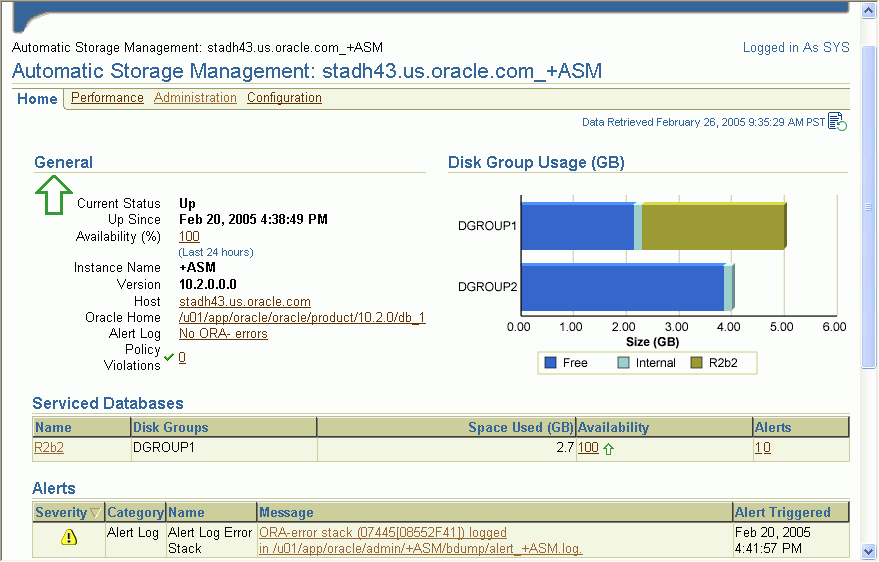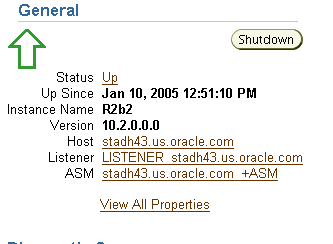| Oracle® Database 2 Day DBA 10g Release 2 (10.2) Part Number B14196-02 |
|
|
View PDF |
| Oracle® Database 2 Day DBA 10g Release 2 (10.2) Part Number B14196-02 |
|
|
View PDF |
All Automatic Storage Management (ASM) administration tasks begin with the ASM Home page in Enterprise Manager. The ASM Home page displays:
The status of the ASM instance
A chart that shows the used and free space of each disk group
A list of databases that are serviced by the ASM instance
Alerts and metrics
Links to the ASM Performance, Administration, and Configuration pages

To access the ASM Home page on a single instance system:
Log in to Enterprise Manager Database Control as the SYS user, connecting as SYSDBA. Provide the SYS password that is stored in the password file for the ASM instance. This password was set up when the ASM instance was created.
See "Accessing the Oracle Enterprise Manager Database Control" for more information.
|
Note: You can also log in to Enterprise Manager as a user other thanSYS. In this case, Enterprise Manager displays the Automatic Storage Management Login page when you attempt any ASM administration tasks. You must then log in to ASM as the SYS user, connecting as SYSDBA. |
On the Database Instance Home page, under the General heading, click the link next to the label ASM.

To access the ASM Home page on a Real Application Clusters (RAC) system:
Log in to Enterprise Manager Database Control on any node that is running the Oracle Management Service (OMS).
OMS is automatically started on the node where Database Configuration Assistant (DBCA) was run to create the cluster database. Depending on your configuration, OMS may also be running on other nodes.
See "Accessing the Oracle Enterprise Manager Database Control" for more information.
On the Cluster Database page, under the Instances heading, click the link for the desired ASM instance.